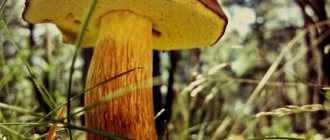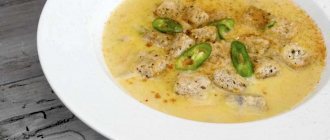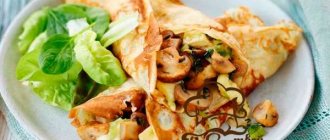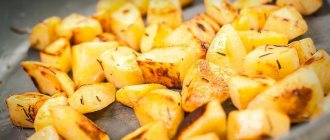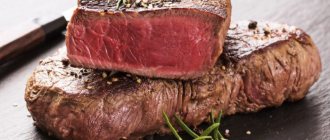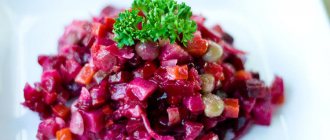Appearance
The cap is up to 20 cm in diameter, flat-shaped, depressed in the center, sometimes widely funnel-shaped with a felt edge turned inward. The skin on the cap is dark olive in color, with barely noticeable concentric zones. The color palette can vary from dark olive and yellowish-brown to dark brown. The cap is slimy or sticky in wet weather.
The hymenophore is lamellar, the plates descending along the stalk, thin and frequent, forked-branched. Spore powder is pale cream in color.
The leg is up to 8 cm high and up to 3 cm in diameter, mucous and smooth, sometimes has depressions on the upper surface. The stem is colored the same as the cap, sometimes a little lighter in the upper part; in young fruiting bodies it is solid, but over time, a cavity forms in it.
The pulp is dense and brittle, white in color, turning gray when cut. It produces abundant white milky juice, which has a very pungent taste.
How long can you store salted mushrooms?
According to established standards, salted and boiled barrel pickles have a shelf life of up to 6 months, provided they are stored at temperatures from 0°C to + 2°C.
- Products that have been sterilized in brine should be used immediately after the jar is opened.
- It is permissible to store already uncorked preparations in the refrigerator for several days if a strong vinegar solution with the addition of spices was used when salting them.
- Mushrooms pickled in jars should be consumed within two days after they have been opened.
- Pickles without seaming are stored for 6 – 12 months. (depending on the method of storage and salt concentration).
- Storing salted mushrooms in the refrigerator has a shelf life of no more than 1 year. They can be stored in the cellar for the same amount of time.
In order not to endanger your health, you should not use expired pickles for food, even if they seem completely normal. And to avoid poisoning, you need to know exactly the period and storage conditions of salted mushrooms.
- protected from light,
- with low humidity,
- at a temperature not exceeding +6°C,
- and not falling below 0°C.
Culinary use
This mushroom belongs to the category of conditionally edible and is considered edible after preliminary soaking and boiling. Usually eaten fresh or salted. When salted, it tends to turn purple-burgundy. The mushroom must be soaked to remove the caustic milky juice. For some reason, the American researcher Thomas Lasso suspected the black milk mushroom that it was supposedly capable of causing cancer, thanks to the substance necatorin it contained, but there was no evidence yet to confirm his theory. And even though for some Western researchers this mushroom looks scary, in Russia they have long loved it, and they knew how to cook it tasty and safe, and, first of all, to salt it.
Dry brining method
Recipes for pickling mushrooms are amazing in their quantity. The dry method is considered one of the easiest. But this method is only suitable for saffron milk caps and russula. Ryzhiki are mushrooms of the first category; they are ideal for dry pickling.
This method differs from the wet method in that the product is not first soaked, not even washed, just wiped with a damp cloth. The salting process looks like this :
- Place the mushrooms in a prepared convenient container, caps down, and alternate each layer with table salt (40 g of salt per 1 kg of product).
- The top is covered with a clean cloth, a wooden circle and a lid are carefully placed (in general, an object that can be pressed down with pressure). An ordinary jar of water can act as oppression.
- After three days, the mushrooms will settle and release juice. After this, they begin to report a new portion. Ten days should pass from the last booking, then you can start trying salted mushrooms.
How to salt milk mushrooms
Salted milk mushrooms have long been considered a real delicacy in Rus', and continue to be so to this day. The most dense and fleshy caps are those of mushrooms that grew under deciduous trees, while those that appeared in coniferous forests have thinner caps. For pickling, it is best to use mushrooms collected in early autumn - they are better stored and less moldy when pickling.
Selection of cookware
To pickle mushrooms, you need to use wooden (best), enamel or glass containers. Do not use galvanized, copper, aluminum, plastic or ceramic containers.
Enameled and glassware should be thoroughly washed with soda and sterilized in the oven at a temperature of 200 degrees.
Wooden dishes must first be soaked in water for several days so that they become waterproof, and if the dishes have just been purchased, then they must be soaked for at least 2 weeks to remove all tannins, which can subsequently turn the mushrooms black.
After soaking, the wooden containers are scrubbed with a stiff brush and poured with a boiling solution of caustic soda (5 grams of soda per 1 liter of water). Now all potential harmful microorganisms from the walls of the dishes will be removed.
Preliminary preparation
- Fruiting bodies must be carefully sorted and cleaned of dirt and forest debris. The most stubborn stains can be scraped off with an old toothbrush or a knife blade. You need to carefully check the mushrooms for the presence of worms and rot and throw away specimens that are too damaged by them. If the area of damage is insignificant, they can be removed with a knife.
- For pickling, it is customary to use only the caps of milk mushrooms. But you don’t need to throw away the legs - you can make wonderful mushroom caviar from them.
- It is best to salt mushrooms when they are approximately the same size, so if possible, you need to sort them and salt small ones with small ones, and large ones with large ones. Or caps that are too large can be cut into several pieces.
- After cleaning, the milk mushrooms are thoroughly washed under running water.
Soaking
The main problem with black milk mushrooms is the caustic milky juice. To eliminate it, mushrooms must be soaked in cold water. The soaking time depends on the size of the mushrooms, their age and the specific place of collection, and can range from 24 hours to five days.
- The fruiting bodies are poured with cold water so that it completely covers them. You can press down the mushrooms with a weight so that they are definitely under water.
- It is recommended to add 10 grams to water. salt and 2 gr. citric acid per liter.
- Water must be changed at least 2 times a day.
- The soaking period lasts, on average, 2-3 days. You can determine it “by tooth” - by cutting off and chewing a small piece of mushroom - if the bitterness is no longer felt, you can complete the soaking. The end of the period can also be understood by the state of the water - initially the water quickly darkens, but after several changes it remains clean. Often, foam appears on its surface, which is also a sign that soaking can be completed.
Pre-preparation and soaking
It is recommended to collect eared mushrooms from July to October, and only young mushrooms can be taken - harmful substances accumulate in old ones over time, which makes them unsuitable for consumption.
And in order for the collected earrings to be stored longer, you should go to the forest in the morning. Important: eared mushrooms can be salted, fried, boiled, or prepared in other ways, but you need to remember the danger of excessive consumption of such mushrooms. In addition, you should not use fruits for making pickles if their fruit body is severely damaged.
After collection, travelers need to thoroughly clean them from dust and dirt. After this, they must be washed in cold water. But the most important point is soaking. These mushrooms can be used in cooking only if they are soaked for at least three days, after which they must be boiled in salted water, changing the water 1-2 times. This will remove the inherent bitterness of the serushkas.
The easiest and fastest pickling recipe
The main advantage of this recipe is speed. Cooked serushki can be eaten after 5-6 days.
Ingredients:
- earrings – 3 kg;
- garlic – 2-3 cloves;
- black pepper – 5 peas;
- salt – 6 tbsp. l.
Salting the cherushka step by step:
- Place the prepared mushrooms in a saucepan and cover with salted water.
- Place the container on the stove, wait until the travelers boil and simmer for half an hour over low heat.
- Cool the earrings - they should be warm, salt them.
- Place the mushrooms in the pan, caps down.
- Place spices and spices between the layers of serushki.
- Place a pressure on top and put it in the refrigerator for 5 days.
The classic method of pickling for the winter in jars
Many chefs consider this method of preparation to be the most successful: the earrings will turn out elastic, juicy, and completely non-bitter.
For preparation you will need:
- earrings – 2.5 kg;
- salt – 5 tbsp;
- garlic cloves – 2 pcs.;
- peppercorns to taste.
Reference! To give the appetizer an incredible aroma and taste, you can add other spices: bay leaf, dill, currant leaves. Some housewives use cinnamon sticks and dried barberries for this.
How to deliciously pickle earrings at home:
- The prepared fruiting bodies are placed in a jar or wooden barrel, each layer of mushrooms being topped with salt and spices.
- Cover the pickle with a plate and place a weight on top. The container with serushkas is placed in the cellar or refrigerator.
After 35-40 days, the mushroom appetizer will be ready.
Salting serukh using the cold method
Mushrooms prepared according to this recipe will turn out crispy and strong, and the risk of souring of the earrings is also eliminated.
For preparation you will need:
- earrings – 1 kg;
- vinegar - 3 tbsp;
- salt – 2 tbsp;
- sugar – 2 tbsp;
- a little bay leaf;
- cloves, pepper - to taste.
It’s not difficult to prepare the workpiece:
- Pour water into a pan, add spices, simmer over low heat for 5-7 minutes. When the marinade is ready, leave it to cool.
- Serushki are prepared, large-sized mushrooms are finely chopped. Then the fruiting bodies are soaked, washed, cleaned and only then proceed to further preparation.
- Boil for half an hour in slightly salted water.
- The containers are sterilized, spices are placed on the bottom of the jars, and boiled mushrooms are placed on top. All this is poured with the cooled marinade and the jars are rolled up.
Is it possible to salt serushki with other mushrooms?
Serushki can be cooked, salted and marinated with other mushrooms. However, many chefs do not recommend doing this, because other mushrooms can interrupt their unique taste.
Hot method with waves
Serushki are best combined with other mushrooms of the Milk family. One of the most popular recipes is cooking with nigella and nigella.
Pickling recipes
There are two main ways to pickle milk mushrooms - cold and hot.
Cold pickling
Advantages of the cold method:
- The mushrooms turn out especially tasty and crispy.
- This method is convenient for salting large quantities of mushrooms at once.
- With this method, you can add fruiting bodies to already salted milk mushrooms, which is very useful if you managed to collect another portion of mushrooms.
A relative disadvantage of this method is the long process time.
For cold salting you will need:
- Milk mushrooms – 10 kg.
- Salt – 500 gr., rock, coarsely ground.
- Dill – 20 inflorescences, with seeds.
- Black peppercorns – 40 gr.
- Blackcurrant, horseradish and cherry leaves - 30 pieces each.
Salting:
- After preliminary preparation of the mushrooms and the container for pickling, place horseradish, cherry and currant leaves with dill inflorescences on the bottom of the container.
- Place a layer of mushrooms, about 7 cm thick, legs up, sprinkle salt and a mixture of spices on top. Next, add a layer of mushrooms again and repeat until the container is full.
- Sprinkle the top layer of the product with salt and spices especially carefully.
- Next, gauze is laid out on top, folded in several layers, a lid is placed on it and a load is placed. A large flat plate can serve well as a lid, and a three-liter jar of water can be conveniently used as a weight.
- The container with the product should be placed in a dark and cool place for a period of 60 days. All this time you need to monitor the condition of the workpiece. Mushrooms under the load will release juice, which should completely cover them. If the amount of juice is not enough, you can increase the weight of the load, or add saline solution (30 grams per liter of water) into the container.
- During the first weeks of pickling, it is permissible to add new mushrooms to the container if the pickling conditions allow it.
- If the top layer becomes moldy, it must be removed and the lid and weight washed with saline solution.
- When the salting process is over, the product should be transferred to glass jars and stored in the refrigerator for no more than 6 months.
Risotto with talkers
- talkers - 1000 g;
- rice – 200 g;
- broth – 800 ml;
- vegetable oil – 20 ml;
- onion – 1 pc.;
- garlic – 2 cloves;
- tomatoes – 1 pc.;
- pepper – 2 pcs.;
- canned corn – 75 g;
- peas – 50 g;
- butter – 50 g;
- hard cheese – 50 g;
- salt and pepper;
- greenery.
- Boil the mushrooms. Then fry them in butter. Place on a plate.
- Cut the peppers, onions, tomatoes into cubes, grate the cheese, put the garlic through a press, finely chop the greens.
- Fry onion and garlic in the same oil. If necessary, add vegetable oil.
- Heat the broth.
- Add rice to the onion. A little later add peas and corn. Add broth little by little. A new portion should be added only after the previous broth has been absorbed into the rice.
- At the end of cooking, add mushrooms, butter, grated cheese and herbs.
Mix and serve in portioned bowls.
Recipes for making talkers with photos are simple. The main thing is that the mushrooms have already been boiled or pickled.



